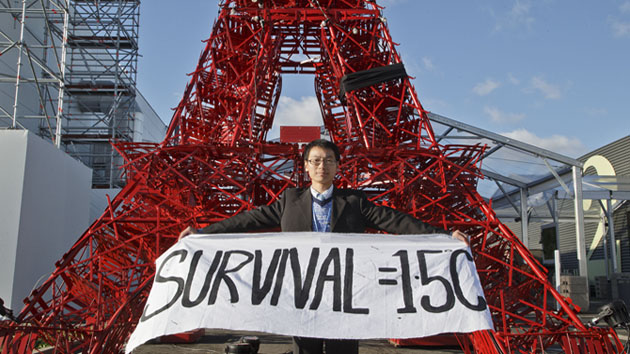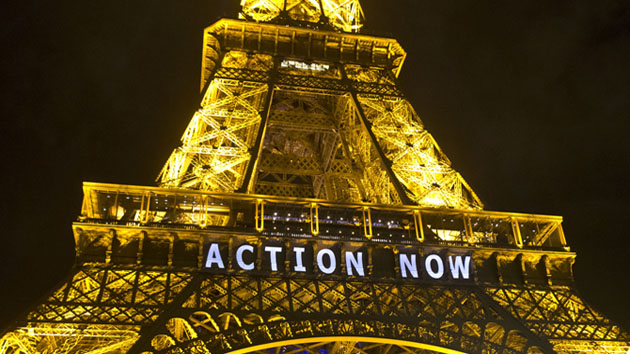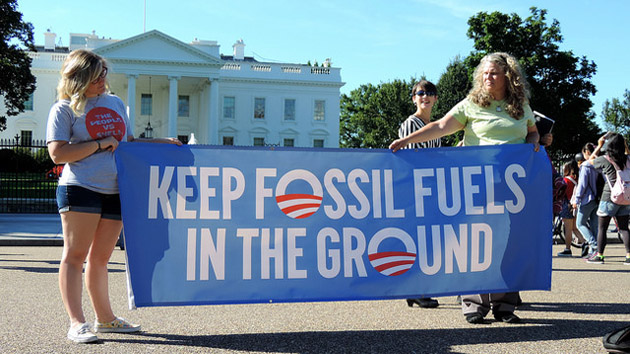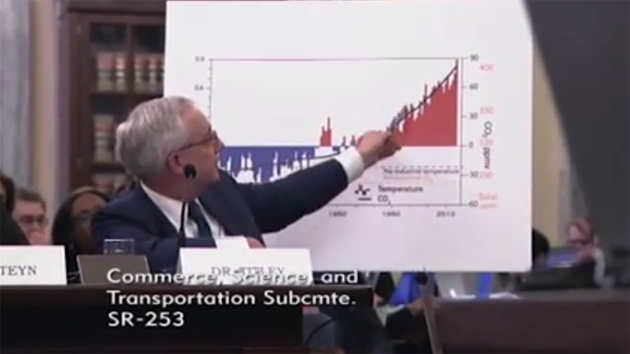The next 24 hours could make or break humanity’s chances of staving off the worst impacts of climate change.
Negotiations in Paris for an international agreement to limit and adapt to global warming are in their final moments, after diplomats pulled their second consecutive all-nighter to crash through a few critical remaining questions in the 28-page document. The most recent draft, released Thursday evening, resolved one of the most important questions on the table: an agreement to at least attempt to limit long-term global warming to 1.5 degrees Celsius (2.7 degrees Fahrenheit) above pre-industrial levels, a crucial half degree less warming than had been on the table before. For climate activists and diplomats from the world’s most vulnerable countries, that was a huge win.
Now, the question is whether the agreement will actually have the necessary tools to achieve that target. Many of the critical pieces needed to make the deal as strong as possible—most importantly, increased funding for climate adaptation in developing countries and a plan to ramp up greenhouse gas reductions over time—are still on the table. That’s a good thing. But there’s no way to know how many of them will survive the night.
“We’re in a good position. The sunlight is really in front of us,” said Li Shuo, a campaigner with Greenpeace in China. Still, he added, “we have tremendous risk that this very could be watered down tomorrow.”
The most important issue under debate right now is the “ratchet mechanism,” which would require countries to boost their climate ambitions incrementally over time. It’s an essential component for actually meeting the 1.5 degrees C target (or even the less ambitious 2 degrees C target), because the promises countries have made so far add up to about 2.7 degrees C—a level of warming that could ultimately prove catastrophic around the world. At the moment, the text requires countries to report their greenhouse gas emissions every five years. But it is still vague about how countries that lag behind could be penalized, how countries could be required to increase their efforts over time, and how exactly their reporting could be internationally fact-checked. Secretary of State John Kerry has been ambiguous on this point; he said on Wednesday that in the agreement, “there’s no punishment, no penalty, but there has to be oversight.”
Crucially, negotiators have also not agreed on when those reviews need to start happening. The view of most experts here is that in order to stay within the 1.5 degrees C target, the reviews should start as soon as possible—certainly before 2020. That way, there’s time to correct course before it’s too late. But the Chinese delegation has resisted that timeline. Last night President Barack Obama and Chinese President Xi Jinping spoke on the phone, according to Chinese state television; what exactly they discussed was unclear, but the call raised some eyebrows here about a possible wedge emerging between the two countries.
Some tension at this stage is to be expected, said David Waskow, director of the international climate initiative at the World Resources Institute.
“What’s happening here is the world is trying to craft a new way of collaborating,” he said. “We’re seeing the growing pains of that process.”
China and the United States were among the first countries to take a strong bilateral stand in advance of the Paris talks, when they released a joint plan to fight climate change last November. Many people I’ve spoken to here have said that this early partnership was one of the biggest reasons to be optimistic about these talks, since disagreements between the two countries has been a key reason that past climate summits have collapsed. So if that mood is changing, it could really improve the final deal in Paris.
China has yet to sign onto the “High Ambition Coalition,” a negotiating bloc that includes the United States, European Union, and dozens of developing countries. That coalition has emerged in the past few days to fight for what it portrays as the strongest possible agreement. I’ve heard concern from many activists here that the coalition is really just a way for the United States to seem like it’s on the right side of history, without actually taking very ambitious steps, while simultaneously painting China and India as the villains. (Eric Holthaus at Climate Desk partner Slate did a good job breaking down that dynamic.)
“Everyone is trying to hide behind the political smog,” Shuo said.
Meanwhile, the United States seems to be obstinately resisting language in the agreement that would make more money available for developing countries to expand their clean energy sectors, and for a compensation fund for the most climate-impacted countries. And negotiators are still squabbling over how exactly to determine which countries should be obliged to do what.
So now, it’s a waiting game. If there’s one thing I’ve learned in my days at this summit, it’s to not even bother looking at the official procedural schedule. Anything can happen anytime because most of the action is taking place behind closed doors. That will continue through Friday night; the next draft of the agreement is due Saturday at 9 a.m. Paris time. At that point, it’s more or less up to the French officials leading the summit to decide whether to force an up-or-down vote or to let diplomats pull their red pens out again.
At the very least, it’s pretty safe to say that the chances of the talks totally collapsing are slim to none. Instead, it’s a question of whether the deal will actually be as ambitious as leaders such as Kerry have repeatedly said they want it to be, or whether it will be something more milquetoast. Either way, no one expects this agreement to actually solve climate change. But this is the most optimistic activists and diplomats have been in the 20-year history of these talks.
As Tine Sundtoft, the Norwegian environment minister, told reporters this afternoon, “There’s no real danger that we will lock in low ambition for decades to come.”
Master image: Triff/Shutterstock















